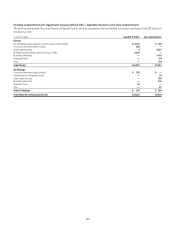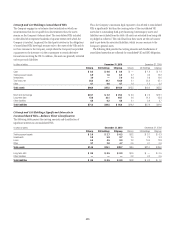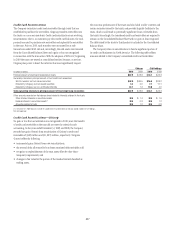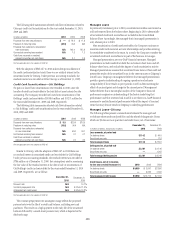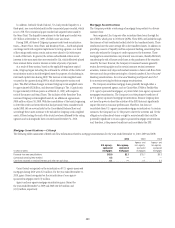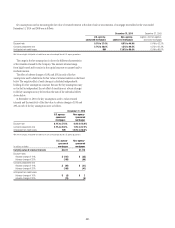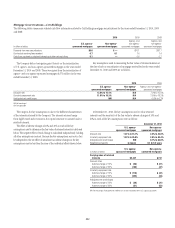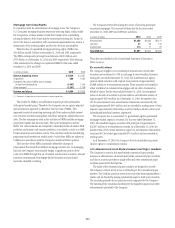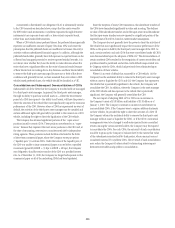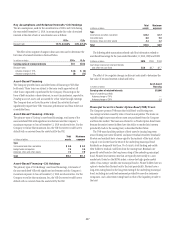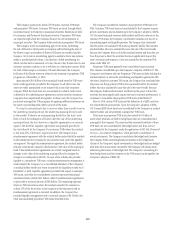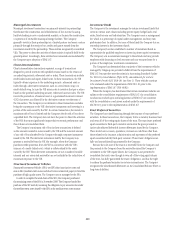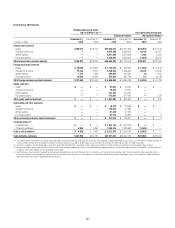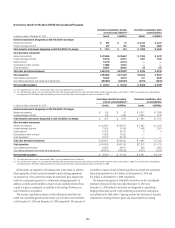Citibank 2010 Annual Report Download - page 246
Download and view the complete annual report
Please find page 246 of the 2010 Citibank annual report below. You can navigate through the pages in the report by either clicking on the pages listed below, or by using the keyword search tool below to find specific information within the annual report.244
As administrator to the conduits, the Company is generally responsible
for selecting and structuring assets purchased or financed by the conduits,
making decisions regarding the funding of the conduits, including
determining the tenor and other features of the commercial paper issued,
monitoring the quality and performance of the conduits’ assets, and
facilitating the operations and cash flows of the conduits. In return, the
Company earns structuring fees from customers for individual transactions
and earns an administration fee from the conduit, which is equal to the
income from client program and liquidity fees of the conduit after payment
of interest costs and other fees. This administration fee is fairly stable, since
most risks and rewards of the underlying assets are passed back to the clients
and, once the asset pricing is negotiated, most ongoing income, costs and
fees are relatively stable as a percentage of the conduit’s size.
The conduits administered by the Company do not generally invest
in liquid securities that are formally rated by third parties. The assets
are privately negotiated and structured transactions that are designed to
be held by the conduit, rather than actively traded and sold. The yield
earned by the conduit on each asset is generally tied to the rate on the
commercial paper issued by the conduit, thus passing interest rate risk
to the client. Each asset purchased by the conduit is structured with
transaction-specific credit enhancement features provided by the third-
party client seller, including over collateralization, cash and excess spread
collateral accounts, direct recourse or third-party guarantees. These credit
enhancements are sized with the objective of approximating a credit rating of
A or above, based on the Company’s internal risk ratings.
Substantially all of the funding of the conduits is in the form of short-
term commercial paper, with a weighted average life generally ranging
from 30 to 60 days. As of December 31, 2010 and December 31, 2009, the
weighted average lives of the commercial paper issued by consolidated
and unconsolidated conduits were approximately 41 days and 43
days, respectively.
The primary credit enhancement provided to the conduit investors is in
the form of transaction-specific credit enhancement described above. In
addition, there are generally two additional forms of credit enhancement
that protect the commercial paper investors from defaulting assets. First, the
subordinate loss notes issued by each conduit absorb any credit losses up
to their full notional amount. Second, each conduit has obtained a letter
of credit from the Company, which need to be sized to be at least 8–10% of
the conduit’s assets. The letters of credit provided by the Company to the
consolidated conduits total approximately $2.6 billion. The net result across
all multi-seller conduits administered by the Company is that, in the event
defaulted assets exceed the transaction-specific credit enhancement described
above, any losses in each conduit are allocated in the following order:
subordinate loss note holders,•
the Company, and•
the commercial paper investors.•
The Company also provides the conduits with two forms of liquidity
agreements that are used to provide funding to the conduits in the event
of a market disruption, among other events. Each asset of the conduit is
supported by a transaction-specific liquidity facility in the form of an asset
purchase agreement (APA). Under the APA, the Company has agreed to
purchase non-defaulted eligible receivables from the conduit at par. Any
assets purchased under the APA are subject to increased pricing. The APA is
not designed to provide credit support to the conduit, as it generally does not
permit the purchase of defaulted or impaired assets and generally reprices the
assets purchased to consider potential increased credit risk. The APA covers
all assets in the conduits and is considered in the Company’s maximum
exposure to loss. In addition, the Company provides the conduits with
program-wide liquidity in the form of short-term lending commitments.
Under these commitments, the Company has agreed to lend to the conduits
in the event of a short-term disruption in the commercial paper market,
subject to specified conditions. The total notional exposure under the
program-wide liquidity agreement for the Company’s unconsolidated
administered conduit as of December 31, 2010, is $0.6 billion and is
considered in the Company’s maximum exposure to loss. The Company
receives fees for providing both types of liquidity agreements and considers
these fees to be on fair market terms.
Finally, the Company is one of several named dealers in the commercial
paper issued by the conduits and earns a market-based fee for providing
such services. Along with third-party dealers, the Company makes a market
in the commercial paper and may from time to time fund commercial
paper pending sale to a third party. On specific dates with less liquidity in
the market, the Company may hold in inventory commercial paper issued
by conduits administered by the Company, as well as conduits administered
by third parties. The amount of commercial paper issued by its administered
conduits held in inventory fluctuates based on market conditions and activity.
As of December 31, 2010, the Company owned none of the commercial paper
issued by its unconsolidated administered conduit.
Upon adoption of SFAS 167 on January 1, 2010, with the exception
of the government-guaranteed loan conduit described below, the asset-
backed commercial paper conduits were consolidated by the Company. The
Company determined that through its role as administrator it had the power
to direct the activities that most significantly impacted the entities’ economic
performance. These powers included its ability to structure and approve
the assets purchased by the conduits, its ongoing surveillance and credit
mitigation activities, and its liability management. In addition, as a result
of all the Company’s involvement described above, it was concluded that the
Company had an economic interest that could potentially be significant.
However, the assets and liabilities of the conduits are separate and apart
from those of Citigroup. No assets of any conduit are available to satisfy the
creditors of Citigroup or any of its other subsidiaries.



